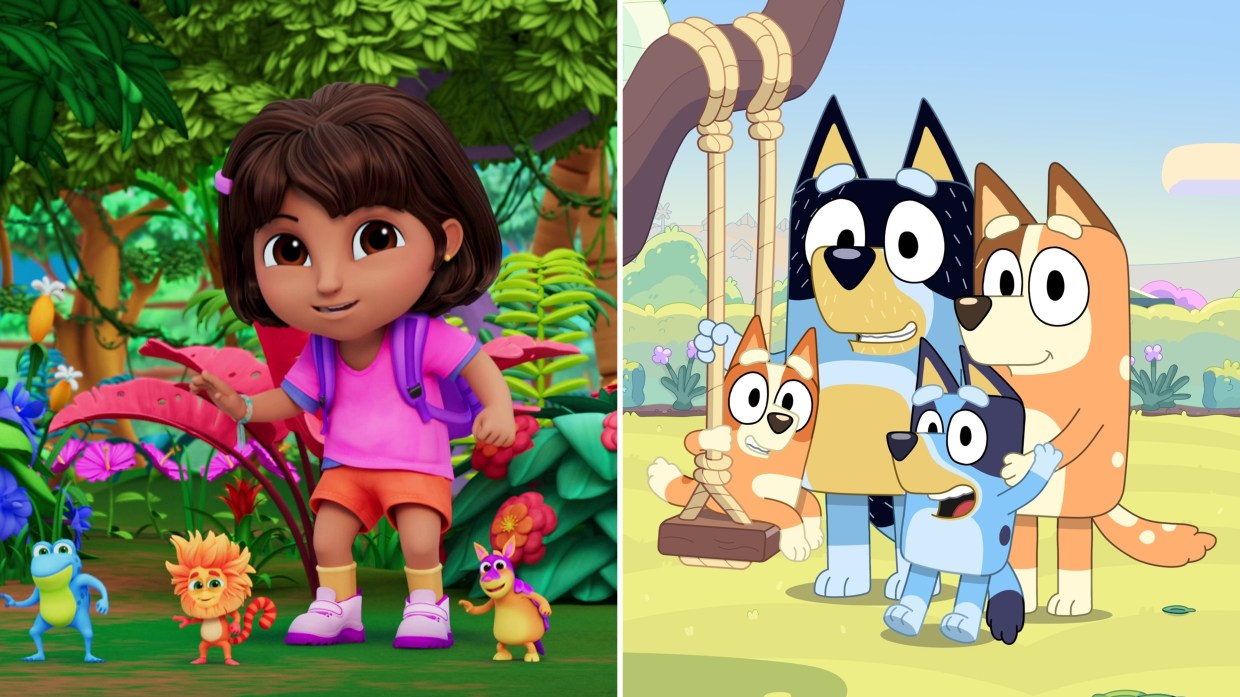ADWEEK House is headed to Las Vegas on January 8! Our house is your house to unwind, recharge and network during the industry’s largest consumer tech moment. RSVP.
As a Latina mother and marketer, raising bilingual children in today’s media landscape is both a joy and a challenge. Growing up, shows like Dora the Explorer didn’t just entertain me—they helped me navigate a complex world between two languages. While English wasn’t my first language, those shows gave me a sense of belonging in both the Spanish-speaking home I grew up in and the English-speaking world outside it. And for that, they were incredibly valuable.
For my own Gen Alpha child—an inquisitive 5-year-old—her world is different. Shows like Bluey have become a staple, captivating our kids with clever humor and characters they adore, alongside plotlines even parents can appreciate. But as English becomes their default, their connection to the Spanish language fades.
It’s a sentiment that many Hispanic parents today understand all too well—the fear that our children will lose touch with the language that ties them to our culture, stories, and our family’s heart.
It’s not just about language—it’s about identity. The term “no sabo kids” has emerged as a reflection of this growing gap. These children may understand Spanish but struggle to speak it fully, slowly losing their link to a part of themselves, a part of their cultural identity. For those raising bilingual children, this isn’t just a trend—it’s a deeply emotional journey and one we’re eager to find a way out of.
Brands, whether they realize it or not, play a significant role in this experience. When brands help us foster that connection, they’re not just marketing—they’re creating marketing that matters. They help us raise the next generation with pride in their roots, showing them that language is more than just communication—it’s a bridge to different worlds.
So, here’s what brands can do to help a mama out.
Explore how storytelling can deepen these connections
Doing so creates a resonance that mirrors our lives—switching between languages with ease and connecting two cultures without compromise. Media that reflects this duality helps us feel seen and understood, allowing our children to embrace both sides of their identity and appreciate the richness of their heritage.
By embracing stories and experiences that reflect who we are, brands can create content that connects authentically with our families and nurtures our cultural pride.
Be intentional about uniting our worlds
Lead with story and culture first. It’s not just about translating content; it’s about creating narratives that authentically capture the bilingual experience. When a child sees characters navigating both languages and cultures with pride, it reinforces that they don’t have to choose between one or the other. It shows them that being bilingual is something to embrace, not shy away from.
In a media landscape that can feel overwhelmingly English-dominant, there’s a vibrant space for content that connects both worlds. When brands authentically invest in this space—through collaborations with bilingual creators or community-driven initiatives—they can tell stories that resonate deeply with our families. By embracing these strategies, we can cultivate environments where children thrive in both languages and cultures.
Strategically team up with media partners to connect with bilingual parents
Brands must move beyond surface-level representation and actively elevate bilingual voices. Collaborate with creators who genuinely reflect our dual-language world, and craft campaigns that don’t just translate, but resonate—deeply connecting on both cultural and emotional levels. Focus on storytelling that reflects the realities of navigating two languages and cultures.
This approach not only captures attention but builds trust with mothers like me. When brands truly embrace bilingualism, they create more than just content—they create a sense of belonging that touches families’ hearts. It’s about more than words; it’s about showing our children that their language, culture, and heritage are valued. This pride strengthens their connection to their roots and empowers them to carry that pride forward into future generations.




